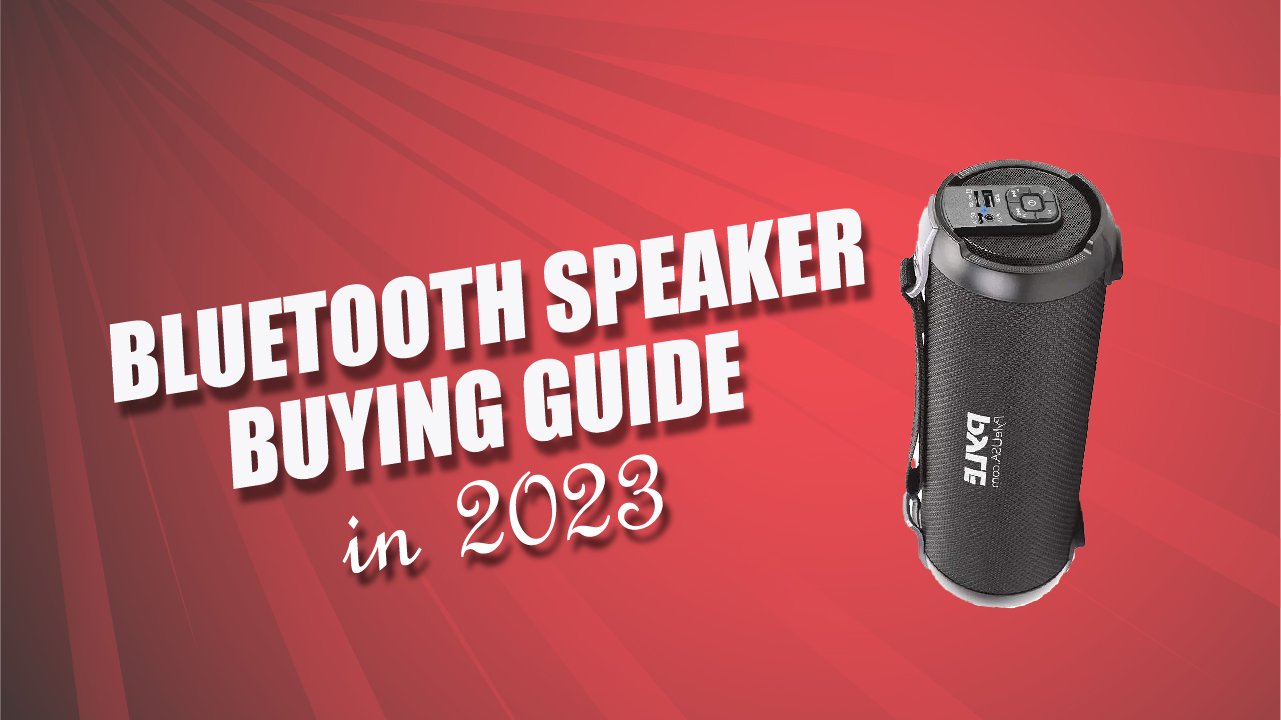
Bluetooth speakers:
Simply said, a Bluetooth speaker is a portable wireless networking device that uses Bluetooth as its main form of communication. Although some Bluetooth speakers may connect to Wi-Fi or conventional networks, their main selling point is flexibility. In addition to their excellent sound quality, Bluetooth speakers are chosen for their features and qualities.
A Bluetooth speaker is a small, portable gadget made for music enthusiasts to improve their background music and make their life easier and more fun! You’re good to go for the remainder of the day if you connect it to your laptop, phone, tablet, or MP3 player. Although partygoers and urban bike riders prefer Bluetooth speakers, many other readily available speakers exist.
There’s a wireless speaker for everyone, and if you want another one for your boarding house, your new house, or that old car with the broken stereo system. This Bluetooth speaker guide will cover the various use cases, key features, and technical words.
Buying guide:
Before buying new Bluetooth speakers, you should consider the following features that will help find you the best Bluetooth speaker for your set.
1. Water-resistant:
No electronic device is completely waterproof; given enough time and depth, any speaker will fail; however, some Bluetooth speakers have been built to last longer than others. Water-resistant speakers are generally acceptable for outdoor use, but this is not always the case.
Many enjoy listening in the shower, but you should consider investing in a properly sanitized product. The speaker’s above variant should be in your spotlight if you’re an experienced outdoorsman, pool parties, or seaside.
2. Frequency response:
Hertz is the unit of measuring frequency. The wider the frequency range, the stronger your speaker will perform to provide a variety of sounds. However, it is not a factor to consider, as your age and hearing also affect the number of sounds you listen to. It is critical to understand frequency to deliver better sound. The sound quality of a Bluetooth speaker is its best feature.
3. Size of the speaker:
It is an important consideration as there is rarely a ‘one-size-fits-all’ speaker, and various use cases require different speakers. There will be the smallest speakers, about the size of a matchbox. They can be a wise option if you want something portable and lightweight, but their application is quite limited. The ultra-portable speakers are the next size down.
Because these speakers are still intended to accompany you throughout the day, they are small enough to fit easily in a bag or attach to your backpack or belt. However, they have a decent sound that is adequate for a small bedroom and provides better sound quality than a typical notebook speaker.
4. Price of the speaker:
The cost of Bluetooth speakers varies greatly, and while there is a relationship between cost and performance, it’s not the case. Many bad speakers cost a lot of money, but there are also good cheap speakers. So, the good news is that even on a tight budget, you can still obtain decent speakers here on the market.
The lowest-priced Bluetooth speakers start at around $15, but even if you’re on a tight budget, I’d recommend skipping this price range in favor of something in the $35-40 range, where you’ll find much cheaper products. There are various sizes of speakers available, each with its price.
5. Connectivity of the speaker:
The amount of internet communication is determined by your Bluetooth version. Aside from wireless connectivity, it is a good idea to have a wired connection feature in your speakers, just in case. Depending on the model, you may be capable of connecting a smartphone or other handset via a USB cable.
You’ll almost certainly need the appropriate cable for your gadget iPhones to have a nine-pin Lightning connector, while Android phones will probably have a USB-C jack.
6. Good battery life:
Consider that volume significantly impacts battery life; the numbers provided by manufacturers in specifications are typically measured from about 50% volume level. Enhancing the volume level to peak value can result in a 70-80% reduction in battery life, a significant difference that can be very unfortunate.
This is mostly fine for larger speakers because you are unlikely to use them at full volume all the time; however, it’s far more likely for a smaller speaker. The most basic speakers have a playtime of about 3-5 hours at a moderate volume level. A speaker with a good battery life can play for about 10-15 hours, while exceptional ones can play for 20 hours.
7. Contain battery life indicator:
Before purchasing a speaker, check if it has a battery level indicator. It can be extremely inconvenient if the speaker runs out of power and shuts down unexpectedly. Unfortunately, some speakers have no battery level indicator, which is quite common, especially in the smaller category. Some speakers have a simple solution.
The color of an LED indicates the estimated battery portion, or it plays different tones depending on whether the battery level is low, medium, or high. A better solution would be when the speaker has 4-5 battery marker LEDs, letting you know exactly how much juice is left.
8. Inputs and output:
Most Bluetooth speakers have supplementary audio inputs that could connect equipment, such as a wireless audio player or a television, to the unit directly via a cable. Some speakers also can charge other devices through the USB port. For example, a Blu-ray/DVD/CD player can be connected to an optical digital audio input. When watching films from a docked iPad on one’s TV, you can connect a subwoofer via the outputs.
9. Bluetooth range:
The Bluetooth range is another important factor to consider when purchasing a speaker. The Bluetooth range is the distance between the speaker and your phone at which the speaker can listen to music without making any noises or cutting out.
Bluetooth speakers range from about 20-150 feet so they can be quite long. However, remember that just about any physical obstacle can massively reduce this range, so you will most likely get a much shorter range indoors with barriers like walls and floors.
10. Speaker ports:
There may be some variations in the ports provided by the speakers. In addition to the Bluetooth connection, often, these speakers have a 3.5 mm auxiliary input port, allowing them to be connected via an audio cable. A charging port is found on all portable speakers with a built-in battery.
This is usually a micro USB 2.0 charging port that can be used with any integrated micro USB cable and adapter. There are speakers with large battery capacities that can function as a power bank and charge other devices. It contains one or more USB charge-out ports, allowing you to connect and charge your devices with a USB cable.
Consider all these features before buying a speaker.





